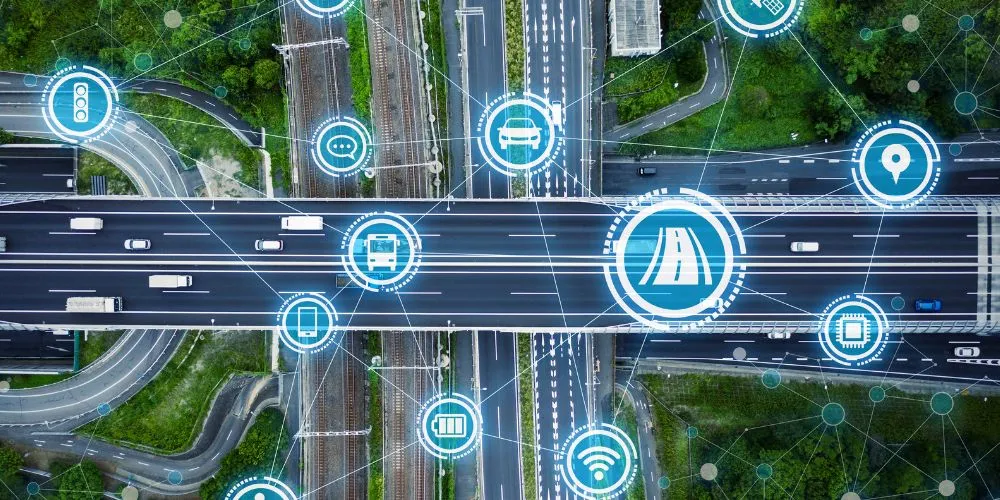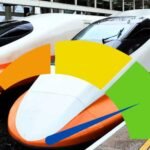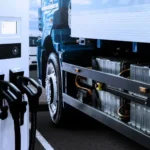Transportation Infrastructure serves as the backbone of modern societies, shaping connectivity, economic development, and the daily lives of millions. This comprehensive exploration delves into the intricacies of Transportation Infrastructure, unraveling its fundamental components, key considerations, recent innovations, and its pivotal role in fostering sustainable and efficient mobility.
Understanding Transportation Infrastructure
Transportation Infrastructure, a complex network of physical and organizational structures, forms the backbone of modern societies. It encompasses various elements, including roads, bridges, railways, airports, ports, and digital communication systems. This multifaceted system is instrumental in facilitating the movement of people, goods, and information, shaping communities’ economic, social, and cultural dimensions.
Key Components of Transportation Infrastructure
The core components of Transportation Infrastructure contribute to its functionality, efficiency, and overall performance:
- Roads and Highways: Roads and highways constitute the arteries of land-based transportation, connecting communities and fostering economic development. Well-designed road infrastructure is critical for ensuring the efficiency and safety of vehicular movement, supporting both urban and rural connectivity.
- Bridges and Tunnels: Overcoming natural obstacles, such as rivers and mountains, bridges and tunnels play a pivotal role in ensuring uninterrupted transportation routes. These structures enhance connectivity and contribute to the resilience and adaptability of transportation networks.
- Railways: The extensive railway network is a cornerstone of land-based transportation, facilitating the movement of goods and passengers over long distances. Efficient rail infrastructure is essential for sustainable and cost-effective transportation, playing a key role in global trade.
- Airports: Air transportation relies on well-designed airports that serve as hubs for domestic and international flights. These aviation gateways are vital for connecting distant regions, fostering tourism, and contributing to the global interconnectedness of economies.
- Ports: Maritime transportation relies on well-equipped ports that serve as crucial interfaces between ships and land-based infrastructure. Ports are key nodes in global trade, handling the import and export of goods internationally.
- Digital Communication Systems: In the digital era, integrating advanced communication systems, including the internet and smart technologies, plays a pivotal role in Transportation Infrastructure. These systems enable real-time information flow, traffic management, and enhanced connectivity.
Recent Innovations in Transportation Infrastructure
Recent innovations have propelled Transportation Infrastructure into a new era, introducing efficiency, sustainability, and safety enhancements that redefine the way societies move:
Smart Transportation Systems
Integrating smart technologies into Transportation Infrastructure has given rise to intelligent transportation systems. These systems leverage sensors, data analytics, and connectivity to optimize traffic flow, enhance safety, and provide real-time information to commuters. These innovations, from smart traffic lights to predictive maintenance, aim to create a more responsive and adaptive transportation network.
High-Speed Rail
The advent of high-speed rail networks represents a paradigm shift in land-based transportation. High-speed rail systems offer rapid and efficient travel between cities, reducing travel times and providing a sustainable alternative to traditional modes of transportation. These systems not only enhance connectivity but also contribute to the reduction of carbon emissions associated with long-distance travel.
Sustainable Infrastructure Practices
Sustainability has become a focal point in modern Transportation Infrastructure. Innovations in eco-friendly materials, energy-efficient designs, and incorporating renewable energy sources are transforming how infrastructure projects are conceptualized and implemented. The emphasis on sustainability extends beyond construction to include the entire infrastructure lifecycle, ensuring long-term environmental resilience.
Advanced Air Traffic Management
In air transportation, advanced air traffic management systems are reshaping how aircraft navigate the skies. These systems leverage cutting-edge technologies to optimize airspace usage, reduce congestion, and enhance the safety and efficiency of air travel. Improved air traffic control and aircraft communication contribute to smoother operations and heightened safety standards.
Considerations in Transportation Infrastructure Planning
Effective planning and development of Transportation Infrastructure demand a holistic approach that considers a myriad of factors shaping the modern landscape:
Urbanization and Population Growth
The demand for efficient and well-connected transportation systems intensifies as urban populations burgeon. Urban planning must adapt to accommodate this growth, address congestion, optimize public transportation, and create sustainable, livable urban spaces prioritizing accessibility and mobility.
Environmental Impact and Sustainability
The environmental impact of transportation projects has become a paramount consideration. Sustainable practices, including using eco-friendly materials, energy-efficient designs, and incorporating renewable energy sources, are essential for mitigating the ecological footprint of infrastructure developments.
Integration of Modes of Transportation
Creating efficient transportation systems involves seamlessly integrating various modes, including roads, railways, air travel, and maritime transport. Multi-modal integration enhances connectivity and provides users diverse and interconnected transportation options, promoting a more efficient and user-friendly network.
Technological Integration and Digitalization
The rapid advancement of technology has necessitated integrating emerging technologies into Transportation Infrastructure. Artificial intelligence, the Internet of Things (IoT), and digital communication systems are integral to creating smart and connected infrastructure that can adapt to the evolving needs of modern societies. The seamless integration of these technologies enhances transportation networks’ overall efficiency and effectiveness.
The Role of Transportation Infrastructure in Economic Development
The impact of Transportation Infrastructure on economic development is profound, influencing regional growth, trade dynamics, and overall prosperity:
Facilitating Trade and Commerce
Efficient transportation networks facilitate trade and commerce, connecting regions and nations. Well-designed infrastructure reduces transportation costs, enhances supply chain efficiency, and makes regions more attractive to businesses. It, in turn, stimulates economic growth and job creation.
Enhancing Connectivity and Accessibility
Transportation Infrastructure improves connectivity, making resources, services, and job opportunities more accessible to diverse populations. Inclusive accessibility contributes to a more equitable distribution of economic benefits, ensuring that the advantages of economic development are widespread.
Supporting Tourism and Hospitality
The tourism industry relies heavily on well-developed Transportation Infrastructure. Accessible airports, efficient roads, and reliable public transportation systems enhance a destination’s appeal, driving tourism-related economic activities and fostering the growth of the hospitality sector.
Creating Jobs and Boosting Productivity
The planning, construction, and maintenance of Transportation Infrastructure generate significant employment opportunities. Additionally, efficient transportation systems contribute to increased productivity by reducing travel times and improving overall connectivity, creating a conducive environment for economic activities.
Challenges in Transportation Infrastructure Development
Despite its crucial role, the development of Transportation Infrastructure faces several challenges that require strategic solutions:
Funding and Financing
Securing adequate funding for large-scale infrastructure projects remains a persistent challenge. Public-private partnerships, innovative financing models, and government investments are crucial for overcoming financial barriers and ensuring the completion of vital infrastructure developments.
Environmental Concerns
The environmental impact of transportation projects, including deforestation, habitat disruption, and carbon emissions, necessitates careful consideration. Sustainable practices and comprehensive environmental impact assessments are vital for mitigating these concerns and ensuring responsible infrastructure development.
Congestion and Urban Planning
Urban congestion poses a significant challenge to transportation infrastructure. Strategic urban planning is required to address traffic bottlenecks, optimize public transportation, and create sustainable and livable urban spaces that prioritize the well-being of residents and reduce the strain on transportation systems.
Technological Integration Challenges
The integration of emerging technologies into existing infrastructure can be complex. Overcoming interoperability issues and ensuring a smooth transition to smart systems require careful planning, investment, and collaboration between various stakeholders involved in infrastructure development.
Future Trends in Transportation Infrastructure
As technology continues to evolve, future trends in Transportation Infrastructure promise to redefine mobility and connectivity in profound ways:
Hyperloop and Advanced Rail Technologies
Emerging technologies like hyperloop and advancements in rail systems are poised to revolutionize land-based transportation. These innovations offer unprecedented speed, efficiency, and sustainability, presenting alternatives that could transform how people and goods move over long distances.
Autonomous Vehicles and Drones
The rise of autonomous vehicles and drones is set to revolutionize the transportation landscape. These technologies promise safer, more efficient, and interconnected mobility solutions. From autonomous cars to drone deliveries, these innovations are reshaping the future of transportation.
Hyperconnected Smart Cities
The concept of hyperconnected smart cities envisions a future where various elements of urban life, including transportation, energy, and communication, are seamlessly integrated. This integration enhances efficiency, sustainability, and the overall quality of life in urban environments, creating more responsive and adaptive cities.
Climate-Resilient Infrastructure
The importance of climate-resilient infrastructure is growing in the face of climate change. Future infrastructure projects must be designed to withstand extreme weather events, contribute to climate adaptation and mitigation efforts, and ensure long-term resilience against the impacts of a changing climate.
Conclusion
Transportation Infrastructure is a linchpin in societies’ development and connectivity, shaping how people and goods move across regions. From the ancient roads to the hyperconnected smart cities of the future, the evolution of Transportation Infrastructure mirrors the progress of civilizations.
While challenges persist, ongoing innovations, sustainable practices, and strategic planning pave the way for a future where transportation is not just a means of movement but a catalyst for economic growth, environmental stewardship, and societal well-being. As we navigate this dynamic landscape, the continued investment in and enhancement of Transportation Infrastructure will be essential for building a sustainable and connected future.










